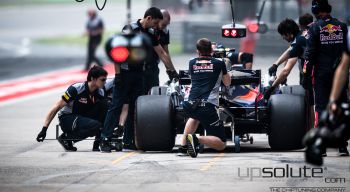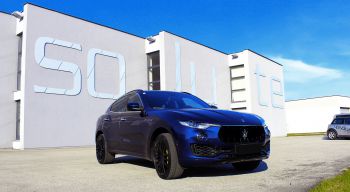The ECU - History and Benefits...
The very quick development of the technologies during the last 3 decades has of course not passed the automotive industry. Of course the automotive industry benefits very much from the new technologies, but in fact the end user benefits the most. We recognize this mainly at the new cars with good performing engines, less consumption, better handling and improved safety. Today modern cars are equipped with electronic Engine management systems, it does not matter if it is a carburetor like central injection, the much more effective multiport injection or a direct injection with common rail technology with electronic charge pressure control.
The most important development was of course the ECU (engine control unit). This device basically consist one or more small microcomputers which are responsible for the regulation of the engine. The microcomputer runs a program which is stored in a Memory (Eprom/Flash) device. The ECU is responsible for the whole engine management and controls, verifies, navigate and adjust all the important functions of the car/engine. This all happens under consideration of the current load condition of the engine in conjunction of the RPM and environment variables (outside temp., air density, engine temp., ...). This all is possible through the information of many sensors which are capable to measure fe. Pressure, temperature, RPM, speed and amount of air with a very high precision. Then the ECU reads the stored values out of the predefined maps for the injection, ignition, charge pressure, lambda, ... In this way, all the time the best possible ignition timing and the optimal amount of fuel in combination with the correct charge pressure is calculated out of the maps in conjunction of all the sensor values.
All this data is optimized at the chiptuning process. That means the maps for injection (at gasoline/petrol cars also ignition) and charge pressure, are measured in conjunction to each other in the whole RPM band, recalculated and with a very detailed computer programing in relation to load and RPM optimized. This is happening in a way that the maximum possible power and torque is gained, while the tolerances for the long life time of the engine is still kept, and the maximum possible fuel economy is reached. Keeping all this in mind, a noticeable power increase and also a stronger torque of the engine is gained. Power and torque improvement of 20-30% at Turbo engines, and 8-12% at normal aspirated engines are realizable, which causes an high improvement for acceleration, agility and top speed The engine will be more agile and stronger, while the lifetime, and the every day use of the engine is at liable use and regular service intervals the same as at the stock setup.
The main purpose at normal gasoline cars is the regulation of the requested and maximal possible amount of injection. Since the Air/fuel ratio needs to be very exactly to let the catalytic convertor work flawless, the injected amount of fuel depends on the amount of air that is available. In addition the optimal ignition point needs to be determined, when the compressed air/fuel mixture is fired. If the ignition point is to late, the consumption will raise, if it is to early the car will start pinging. In addition the ECU has many other purposes, which will not be changed.
At modern diesel engines the amount of injection is calculated out of the amount of Air, air pressure, outside temperature, RPM and load. This is needed to keep the emission restrictions. At turbodiesel engines, beside this the charge pressure and charge volume of the Turbochargers needs to be defined load and RPM depended. All these information are stored in the Eprom/Flash of a modern ECU. Out of this values (maps) the ECU calculates the at a special RPM/load condition possible or needed amount of fuel injection.



